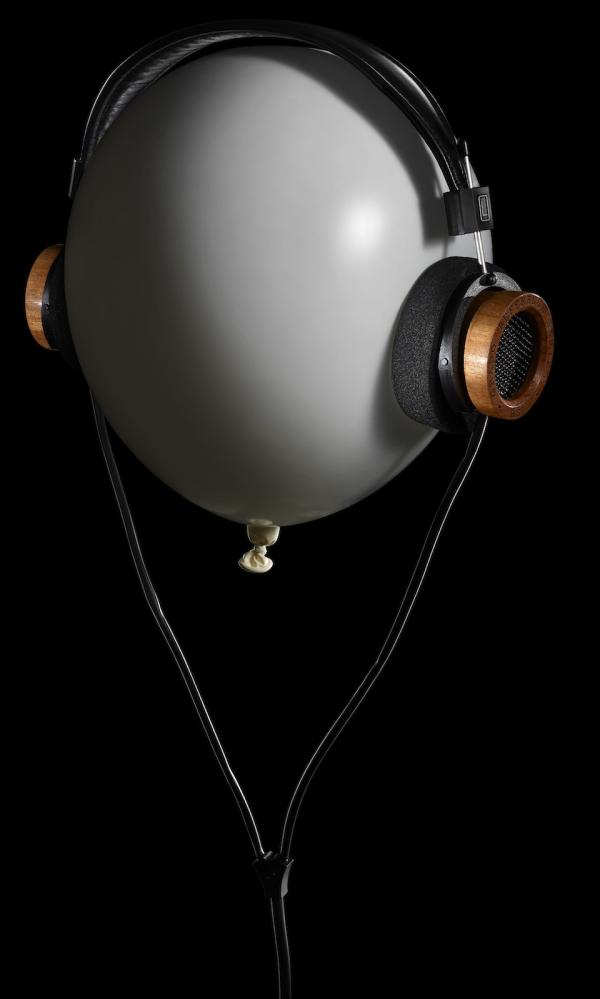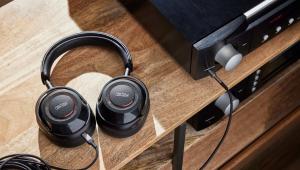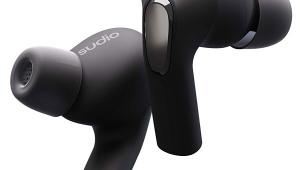Grado RS2i

ANY AUDIOPHILE CAN RECOGNIZE a pair of Grado headphones from 50 feet away. The distinctive, old-school leather band and earpieces mounted on sliding rods give them a World War II vibe. But audiophiles love them for their sound, not their looks.
Your eye goes immediately to the RS2i’s mahogany air chamber, chosen because it’s less resonant than a typical thin plastic or metal housing. The cable’s thick and stiff, but the ’phones themselves are remarkably light and don’t clamp your head too tight. However, the foam earcups are stiff and small, and their somewhat abrasive feel left me wishing Grado would cover them with some plush fabric.
Sonically, the RS2i was the most controversial of all the headphones tested. All of the panelists complimented the RS2i for its incredible detail. “Very fast, great transients, and not a lot of coloration,” Howard said. However, none of the panelists loved its treble-heavy, bass-starved balance.
The RS2i’s response plot confirms its tonal balance is tilted strongly toward the treble. Increasing output impedance to 75 ohms introduces a mild bass boost maxing at 2.4 dB at 68 Hz. Impedance averages 32 ohms and increases to 45 ohms at 68 Hz. As expected for this type of headphone, isolation is negligible. At 80 dB, distortion is a little high in the bass below 50 Hz but very high at 100 dB, rising to 33.5% at 20 Hz. Average sensitivity from 300 Hz to 10 kHz is 102.4 dB.
“This is a genre-specific headphone,” said Will, who rated the RS2i higher than the other panelists did. “I’m thinking it’d be ideal for classical music, acoustic music, or anything without a lot of bass.” I agreed, finding the RS2i quite compelling for my daily diet of trad jazz; singer Susie Arioli’s rendition of Duke Ellington’s “I Got It Bad (and That Ain’t Good)” sounded incredibly clear, like I was hearing it over the studio monitors as it was being recorded. When I put on Soundgarden or Mötley Crüe, though, I instantly pined for a more balanced sound.
Still, the RS2i was never intended for rock. It’s for audiophiles whose taste in music tends toward pristine recordings of acoustic instruments and voices. In our opinion, it’s not really for anybody else.


























































